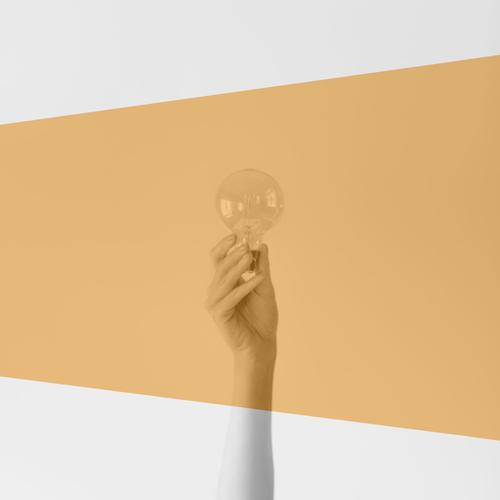Research Focus: Metaphor - Film Images, Cinematic Thinking, and Cognition
Research Focus: Metaphor - Film Images, Cinematic Thinking, and Cognition
The discourse around theories of metaphor and metaphorization marked the beginning of our work at Cinepoetics – Center for Advanced Film Studies. We focused on the question how theoretical concepts and analytical models regarding processes of metaphorization can constitute a valuable approach to the film-theoretical topos of thinking in audiovisual images. In analyzing if – and how – metaphorical meaning emerges within the interaction of cinematic images and audiences, we aimed at discerning a genuinely cinematic concept of metaphor.
Central to our approach was the fact that analyzing cinematic representation cannot be the key to the idea of thinking in audiovisual images. Thus, we did not aim at simply applying linguistic or cognitivist concepts of metaphor to cinematic representations. Nor did we regard audiovisual images as manifestations of an abstract interplay of generalized cognitive schemata. Rather, we assumed that thinking in audiovisual images is constituted only in the very interactions between cinematic images and their audiences. In this regard, we wanted to analyze metaphoricity as a process of emergence in which relations of meaning-making are established in the first place.
Working on these questions and theses, we followed a close transdisciplinary approach including film studies and recent metaphor research. While also being a senior fellow at Cinepoetics, our associated researcher, linguist and expert on gesture studies Cornelia Müller co-created our program for this research focus. During the first academic year, we worked with a diverse group of fellows from cognitive and applied linguistics, gesture studies, psychology and media studies: The work of our fellows Lynne Cameron, Alan Cienki, and Raymond W. Gibbs, Jr., founding members of the Association for Researching and Applying Metaphor (RaAM), has had a significant impact on current international metaphor research. Fellows for this focus also included Irene Mittelberg, Eve Sweetser, and Kathrin Fahlenbrach. Our guests were Naum Kleiman, Warren Buckland, Martin Vöhler, Oliver Lubrich, Charles Forceville, Mark Turner, and Petra Gehring.
Concentrating on questions of experiential reality, our reading group on classical theories of metaphor primarily concentrated on making visible the nexus between philosophical / rhetorical / poetological theories of metaphor on the one hand and cognitivist / linguistic theories of metaphor on the other. We were able to build on existing research on multimodal metaphor and cinematic expressive movement, which outlined a first engagement with dynamic metaphor in linguistics and cognitivism and provided us with a starting point from which we could focus on the connection of metaphorizing and thinking in cinematic images. Do acts of metaphorization relate to a poiesis of viewing films in the same way as they relate to verbal and gestural discourses?
We verified these hypotheses and methodical approaches in workshops as well as film-analytical colloquia through joint discussions about distinct subjects of study. These included various collaborations with Lynne Cameron, who, both as fellow and as Artist in Residence, gave us valuable impulses for a theoretical and practical reflection of perceiving, speaking and producing, of the poiesis in artistic practices and forms of creative collaboration.
In July 2016, we organized the international conference RaAM 11: Metaphor in the Arts, in Media and Communication, the bi-annual meeting of the Association for Researching and Applying Metaphor. A round-table presentation by members of Cinepoetics provided a possibility to share our film-theoretical perspective on metaphor (as it has been established in collaboration with our fellows) with an international community of metaphor researchers. Also, we hosted the pre-conference workshop “How meaning becomes graspable” on an interdisciplinary transfer of methods at the Europa-Universität Viadrina in Frankfurt (Oder).
Our first Cinepoetics Symposion was held in Fall 2016, co-organized by our associated member Anne Eusterschulte. A close reading of Hans Blumenberg’s philosophical concept of metaphorology laid the foundation for an initial film-theoretical summary of our first research focus.
Within this research focus theoretical elaborations and methodological outlines were developed, which allow us to understand metaphoricity as a dynamic process that links different forms of experiencing. Metaphors not only connect given similarities and their cognitive correlates; these connections themselves emerge as new perspectives on reality. In short: gestural, verbal, audiovisual and other metaphorizations do not simply transfer given meaning. They always relate to a comprehensive experience of reality, to a world that defines the condition of this relation in the very process of metaphorizing.
Reaching back to the film-theoretical concept of expressive movement, we understood the bodily experience of being affected by dynamic audiovisual images as a source of cinematic metaphorizations. This enabled us to merge the concept of thinking with audiovisual images, – similar to Sergei Eisenstein – with metaphors. This became graspable as a way of thinking that puts into effect a modulation of experiential schemata while inextricably linking together symbolic forms and affective dynamics.
These results have been published in the following volumes of our Cinepoetics book series:
Hermann Kappelhoff: Kognition und Reflexion. Zur Theorie filmischen Denkens (October 2018)
Furthermore, the second edition of our online journal mediaesthetics gathers contributions by the keynote speakers and junior researchers of the 2016 RaAM conference, “Metaphor in the Arts, in Media and Communication” (which was organized by Cinepoetics in cooperation with the Europa-Universität Viadrina in Frankfurt/Oder).
